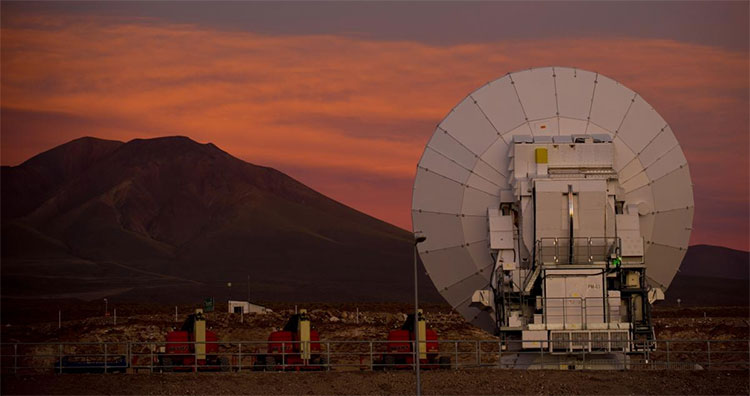Detects aluminum around a new star thanks to the ALMA telescope
The trace of aluminum has been found in meteorites considered one of the longest solid objects in the Solar System , but so far the scientific world has yet to relate to the process of formation and evolution of they are with the formation processes of planets and stars.
In a conclusion quoted in the Astrophysical Journal Lettersel , the research team works at ALMA, asserting 'this finding is therefore a great opportunity to study the process. Initial formation of meteorites and planets like Earth '.

Antenna of the super telescope ALMA in the Chajnantor region, the Atacama desert, 1500km north of Santiago, Chile.(Photo: AFP / VNA).
This text explains that the stars are surrounded by gas disks, and some of them will "solidify" and shape cosmic dust particles that will eventually coalesce to form larger objects, from meteors, to planets and eventually to planets. Understanding this initial formation of solid objects is a fundamental step in understanding the whole process later.
Prof Shogo Tachibana, of the University of Tokyo and the Japan Space Exploration Agency (JAXA), and colleagues analyzed data collected through the telescope at ALMA about the giant star with the symbol Orion KL Source I and detects the characteristic emission of aluminum oxide molecules .
Professor Tachibana said: 'Aluminum oxide plays a very important role in forming the most ancient matter of the Solar System. Our findings will help to understand the evolution of matter in the beginning of the Solar System '.
According to the plan, the team will look at other young stars to find the presence of aluminum oxide. Combining these observations with data from meteorites and specimens from JAXA's Hayabusa 2 missions, Professor Tachinaba believed he would get basic information about the picture. city and evolution of the Solar System and other planetary systems.
- Dear ALMA, taking a picture of a star is born
- Close up of the world's largest telescope
- The world's largest telescope operates
- Astronomers have just discovered the first ribbon around a star
- Miraculously blue ice comets fly around the star like the Sun.
- Chile radio telescope reaches maximum capacity
- The most terrible telescope starts
- Will the Solar System have 9 planets again thanks to this new discovery?
- The largest space telescope goes into operation
- The largest radio telescope in operation
- From transparent aluminum to philosophical stone
- The first clear picture of planet formation
 Van Allen's belt and evidence that the Apollo 11 mission to the Moon was myth
Van Allen's belt and evidence that the Apollo 11 mission to the Moon was myth The levels of civilization in the universe (Kardashev scale)
The levels of civilization in the universe (Kardashev scale) Today Mars, the sun and the Earth are aligned
Today Mars, the sun and the Earth are aligned The Amazon owner announced a secret plan to build a space base for thousands of people
The Amazon owner announced a secret plan to build a space base for thousands of people